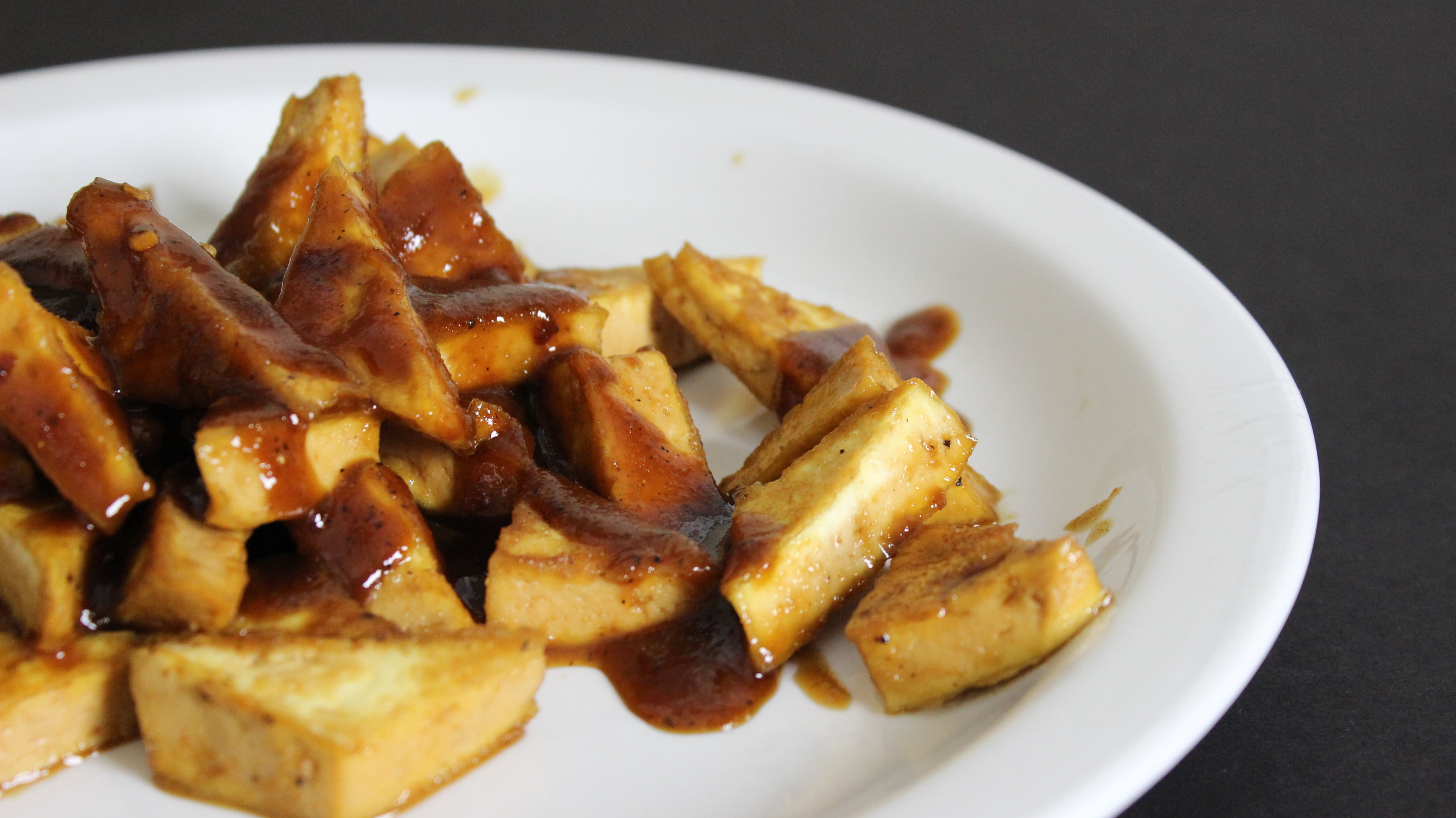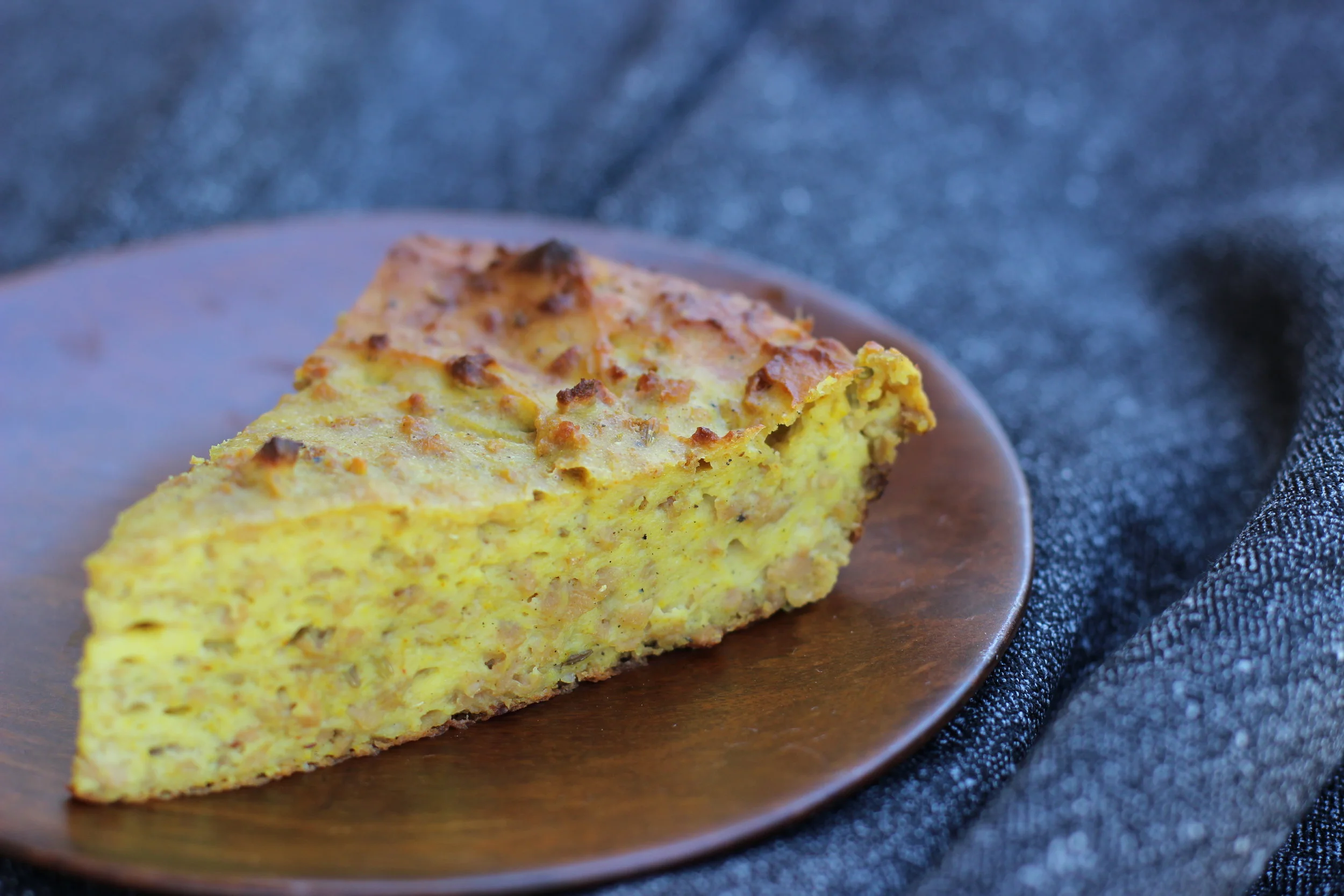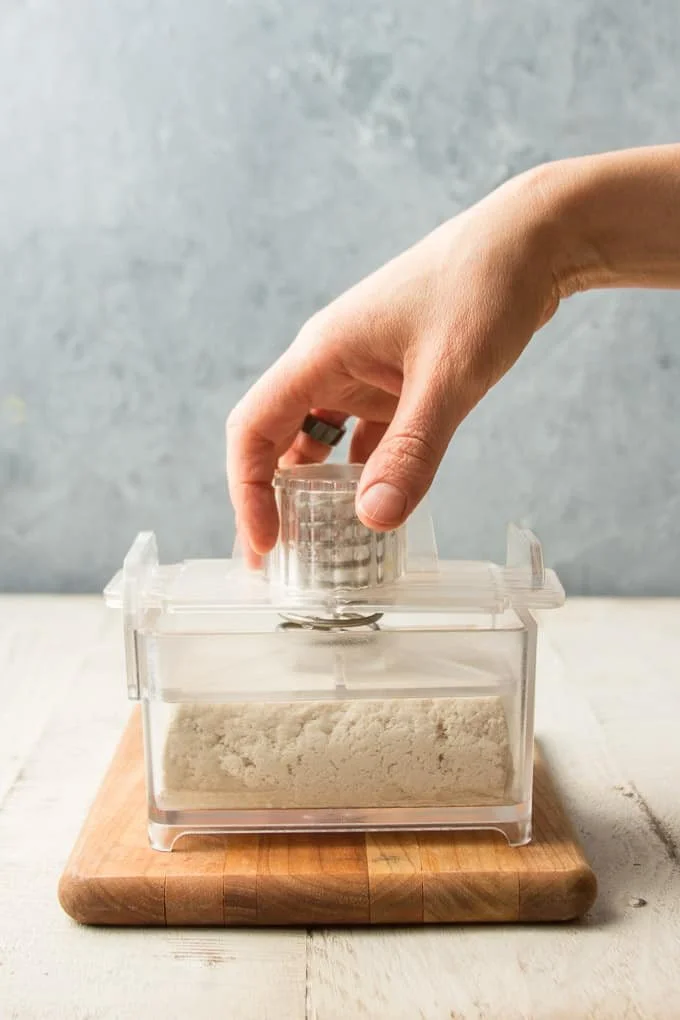Transcript
poeticbeauty7 requested a video about food recommendations and kitchen essentials for those of you who want to transition to a vegan lifestyle. She said that she's ready to transition, but still wants to make tasty meals for her family. And who can blame her?
Here are 10 tips for transitioning to a vegan diet deliciously.
1 / Have a mindset of openness and exploration in the kitchen
The first essential tool that you should have in your kitchen is a mindset of openness and exploration. I imagine that if you’ve been watching my videos and other YouTubers, you probably already have this.
2 / Decide to make time to cook and experiment in the kitchen
You should also decide to make time to cook and experiment in the kitchen. Eating this way is so much more enjoyable when you cook. You’ll have far more options and you'll never be bored.
3 / Get a good knife, cutting board and a blender (and maybe a food processor)
There are many tools that are considered essential for someone adopting a vegan diet, but the 3 that I use consistently are a chef’s knife, a cutting board and a blender. That’s it. Sometimes I use my food processor, but in most cases, the blender is all I need.
4 / Teach yourself knife skills
Along with the last tip, I highly recommend that you get a good chef’s knife and teach yourself knife skills - like how to properly slice, dice and julienne. There are lots of YouTube videos out there for this and I’ve pulled some into a playlist.
Using proper techniques will make you a lot more efficient in the kitchen over time and chopping your vegetables into uniform pieces helps them cook evenly. And your food will look better :) And you know we eat with our eyes first.
So those are some of the things that I consider kitchen essentials. Following a vegan diet really can be as simple or complicated as you make it.
5 / Buy ingredients as you need them
When it comes to food recommendations, I’m not going to give you a list of items that you should always have in your pantry or refrigerator.
[Tweet "By ingredients as you need them, not just because they are on a vegan pantry list."]
My pantry and refrigerator probably aren’t stocked compared to many others and I always plan my meals and then buy what I need to make those meals.
The only things that I make sure I always have are milk and margarine. And they're are other things that I have on hand because they come in large sizes and a single recipe doesn't usually use them all up, like flour, baking powder, vital wheat gluten and TVP.
Now, I'm going to admit that I do have a lot of spices. So, the bottom line is you don’t need to follow anybody's list and buy everything on it. Buy ingredients as you need them for recipes.
6 / Identify what you make that's already vegan
Identify meals and foods that you make that are already vegan.
For breakfast, there’s cereal that doesn’t have milk or honey in it - dry cereal. Oatmeal, grits & cream of wheat are all vegan. And it's pretty easy to find vegan bread for toast and plain bagels are usually vegan.
For lunch and dinner, vegetarian burritos and tacos without cheese are vegan. The same goes for any pasta dish, whether it is a warm pasta with marinara sauce or peanut sauce or a cold pasta with a vinaigrette that you might eat in the summertime.
Sides like rice, potatoes & other vegetables are vegan too.
Snacks like tortilla chips, salsa and hummus are vegan. And sorbet is vegan.
7 / Identify what you make that can be easily veganized
The easiest things to substitute are milk, butter and margarine, cheese. So if something you usually make includes these ingredients, just pick your favorite non-dairy milk, get some earth balance and pick you favorite non-dairy cheese.
Other things are not quite as simple, but pretty easy with the help of Google.
You can make french toast vegan, vegan pancakes and vegan biscuits. You can buy vegan breakfast sausage and bacon. I’ve made vegan quiche and tofu scramble is a great substitute for scrambled eggs.
For lunch and dinner, the meat in sandwiches can be swapped out for more veggies, tofu or tempeh.
And really, there are so many possibilities once you start thinking in terms of what you eat and not what you don’t eat.
8 / Rethink the plate
Along with that idea, we need to rethink our plates. Most of us think that a plate should have a main dish and a few side dishes. Well, you don’t necessarily need a main dish per se.
Your plate can have 4-5 foods that may traditionally be thought of as side dishes. You don't even have to eat them on a plate. You can put them in a bowl and drizzle a delicious sauce on top.
And so, when you’re planning your meals, try to think outside of that box and just prepare foods that you enjoy. Fix enough so that you're satisfied and don’t worry so much whether or not they go together or if you have a “main dish.” Just make sure that you have enough that satisfies you.
One of the things I learned when I first went vegan was that, you know, just 4 vegetable dishes wouldn't keep me full. I needed to have something starchy in there, whether it be a starchy vegetable or rice or something like that. And that would keep me full. So just play around with it.
And if you feel like you must have a main dish, there are lots of options for those as well, but just don’t get stuck on that idea. Eat lots of colorful, delicious food that you'll enjoy and you’ll be just fine really.
Remember that the delicious part is on you. Experiment with recipes and spices and don’t be afraid to add salt and pepper, at a minimum.
9 / Try unfamiliar vegetables and learn new recipes
What I also suggest is that you take some time to explore the produce section of your local grocery store. Despite what everyone who ever talks to me about what I eat thinks, I do not shop at Whole Foods. My nearest Whole Foods is about an hour away.
And you can buy vegetables, legumes, fruit, grains at your local grocery store. It doesn't need to be a specialty or health food store. All of the stores near me sell tofu and one sells tempeh. Every once in awhile if I’m experimenting or need something like nutritional yeast, I’ll have to go to a grocery store that’s maybe not as close or just not one of my regular places that I shop, but most of the time, when I’m eating whole foods, I can get what I need at my local Walmart, Food Lion or Martins.
So I recommend you find recipes for vegetables that you haven’t eaten before and try them out. Buy a few cookbooks and experiment. And if you’re like me, you grew up eating the same few vegetables fixed the same way. And since changing my diet, I’ve really discovered several vegetables that I’ve come to love.
So, try to see if you can find a new vegetable to try in each color that you really enjoy and that you can kind of work into your weekly menus.
Red. Everyone has had tomatoes, but I love red bell peppers! And last year I tried beets for the first time and I haven’t tried rhubarb yet. I’ve got to add that to my list.
Orange and Yellow. I also love orange and yellow bell peppers! They're so sweet. Most of us are familiar with corn, yellow squash, carrots and sweet potatoes for this category. But butternut squash is a vegetable that I had never tried before I changed by diet and now I love butternut squash, particularly in soup. And it’s also good roasted too. There are several other varieties of squash that I haven’t fixed yet. I have fixed spaghetti squash, but I haven’t prepared acorn squash or delicata squash.
Green. In the green category, we're all very familiar with cabbage, lettuce, peas, zucchini, broccoli, spinach. Most of us probably grew up eating some type of leafy greens, maybe not kale, but probably collards are mustard greens.
Just make sure you know and learn how to prepare these green vegetables in a way that is best for the vegetable. And a tip is that boiling, especially for a long time, is generally not the best way to prepare these green vegetables.
I thought I hated brussels sprouts because my mom boiled the frozen ones, but cooking fresh brussels sprouts with less heat, roasting them and even eating them raw changed my mind about brussels sprouts. I also thought I didn’t like asparagus until I learned how to do a quick sauté with a little lemon juice, salt and pepper. And I never ate avocados growing up, but now I love them. And I still haven't prepared artichokes yet. I've eaten them, but I haven't prepared them.
Purple. I cooked eggplant for the first time about 5 years ago. Loved it! I still want to experiment with this more now that I’m vegan. I want to do that eggplant parmesan - a vegan take on that. And purple cabbage is pretty common and great in a stir fry.
White. In terms of white vegetables, we always think about potatoes, onions and mushrooms. And I had eaten regular button mushrooms before I became vegan, but I’d never prepared portobello mushrooms before. And I've actually only cooked shitake mushrooms when they were mixed with some others, but I haven't fixed them on their own. Have you tried jicama and parsnips? I tried both of those for the first time in the past year or so. So, that was cool.
So take a look around the next time you go to the grocery store and pick up something you’ve never cooked before, then come over to YouTube and find out how to prepare it. That’s what I always do.
10 / Don't give up on a vegetable on your first try
If you or your children claim to not like a particular vegetable, don’t abandon it forever - just try preparing it a different way. Boiled broccoli tastes very different from steamed broccoli that's seasoned well, roasted broccoli and raw broccoli made into a slaw.
And definitely don’t buy into the “I don’t like vegetables” comment. Vegetables are as good as the cook who prepares them. So, become a great cook and you won’t have a problem getting people to eat your food. If you stick with it, you definitely will improve with time.
And you'll notice that putting more focus on vegetables and grains than the meats when you're cooking takes a slight shift in your mindset, but it can be really fun.
Summary
So, here they are again - 10 ways to transition to a vegan diet deliciously.
Have a mindset of openness and exploration in the kitchen.
Decide that you will make time to cook and experiment in the kitchen.
Get a good knife, cutting board and a blender and maybe a food processor.
Teach yourself knife skills.
Buy ingredients as you need them for recipes instead of having this perfect vegan pantry.
Identify meals and foods that you make that are already vegan.
Identify some that can be easily veganized.
Rethink your plate.
Try unfamiliar produce & learn new recipes.
And don’t give up on a vegetable on your first try.
I’m always planning future videos so let me know if there’s a particular vegetable that you’d like to see me prepare that I haven’t prepared or if there’s a vegetable that I’ve fixed that you want to see cooked using a different technique. Also let me know if there’s something that you haven’t seen veganized that you want to eat.
I know this was a little long and different from what I usually do, but I wanted to put some thought into poeticbeauty7’s question, so thanks poetic beauty and thanks to all of you for watching and I’ll see you next time!
















